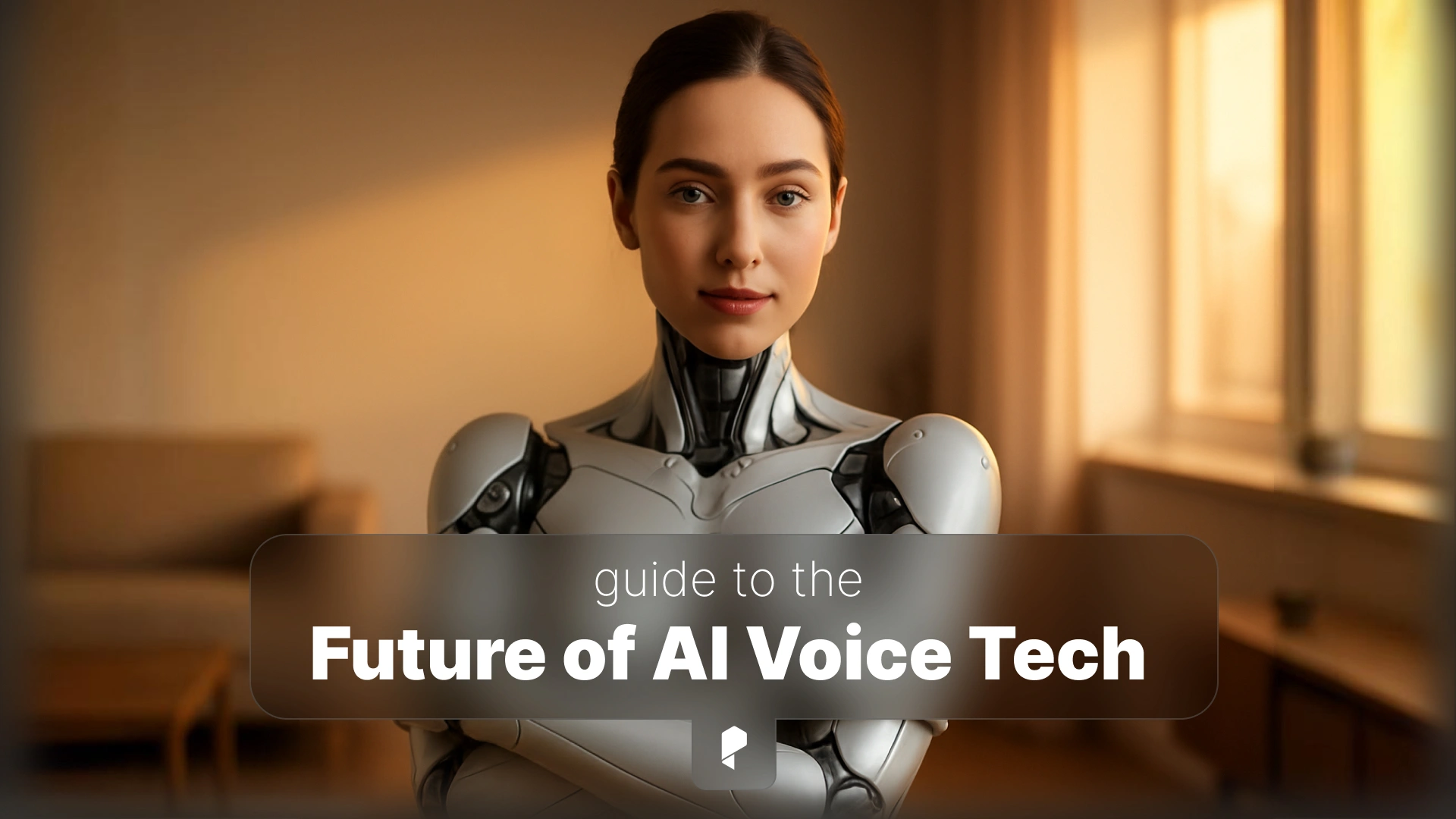The Future of AI Voice Technology: Trends, Predictions, and Opportunities

Many creators and businesses still view AI voice as just a convenient tool, not realizing its potential as a strategic game-changer. By understanding the trends and innovations shaping AI voice, you can stay ahead and use it to enhance content creation, business communication, and interactive media. Explore the future of AI voice technology to see how it can elevate your projects.
Current State of AI Voice Technology
Adoption is growing across several areas:
Content creation and social media: Creators on platforms like YouTube, TikTok, and Instagram use AI voices to produce videos faster, experiment with different styles, and reach a wider audience.
Film and animation: AI voice tools simplify dubbing, prototyping, and character narration, saving time and reducing costs.
E-learning and corporate training: AI voices allow personalized and multilingual narration, helping global audiences access content without repeated recording sessions.
Gaming and interactive media: AI voices bring NPCs and interactive storytelling to life, creating adaptive and engaging experiences.
Business communication: Marketing videos, automated tutorials, and customer support applications benefit from scalable, consistent, and natural-sounding AI narration.
Platforms like Pixflow’s AI Voice Plugin offer advanced controls for emotion, pacing, and style, providing a solid foundation for the next generation of AI voice innovation.
Emerging Trends in AI Voice Technology
Emotionally adaptive voices can adjust tone and style based on the context or audience sentiment, making content more engaging and natural.
Real-time AI narration is becoming possible for live streaming, gaming, and interactive experiences, generating voices instantly as events unfold.
Voice cloning and personalization allow brands to create consistent voice identities, or even replicate celebrity-style narration. This trend also enables personalized narrators tailored to individual users.
Multilingual scalability ensures content can be released globally without the need for multiple re-recordings, making international distribution faster and easier.
Integration with AR, VR, and the Metaverse opens new possibilities for fully immersive experiences, where AI-driven characters speak and react naturally in real time.
These trends highlight the growing capabilities of AI voice technology and its potential impact on content creation, entertainment, and business communication.
Implications for Creators and Businesses
In short-form video and social media, AI voices enable faster production, easier trend adaptation, and the ability to test multiple narration styles quickly.
For gaming and interactive media, AI voices make storytelling more dynamic, with NPCs and in-game characters reacting naturally to player choices.
In film and animation, AI-assisted voiceovers reduce production costs, simplify dubbing for multiple languages, and accelerate prototyping of new ideas.
E-learning and corporate training benefit from personalized and multilingual narration, allowing content to reach wider audiences without extra production work.
Businesses can also use AI voices to maintain a consistent brand tone across marketing videos, tutorials, and automated customer interactions. By embracing these technologies, creators and organizations can save time, scale their content, and deliver more engaging experiences.
Ethical Considerations and Challenges
Voice cloning risks include consent issues, copyright concerns, and the possibility of deepfakes. Using someone’s voice without permission can have serious legal and ethical consequences.
Over-reliance on synthetic voices may reduce human creative input. While AI can speed up production, maintaining authenticity and emotional depth often still requires a human touch.
Creators and businesses need to balance automation with ethical use, ensuring AI-generated content respects consent, intellectual property, and audience trust. Staying informed on these challenges is critical as AI voices become more advanced and widely adopted.
Tools and Platforms Leading the Way
Integration with video editing and motion graphics software allows seamless use in workflows like Adobe Premiere Pro and After Effects, letting creators add AI-generated narration directly to their projects. Emerging platforms such as Pixflow’s AI Voiceover provide this flexibility, along with innovative features for personalization, voice cloning, and multilingual output.
Other AI voice tools are also exploring real-time narration, immersive AR/VR integration, and adaptive storytelling, giving creators and businesses the ability to produce content faster while maintaining high-quality audio experiences. These innovations are shaping the future of AI voice technology, enabling creators to experiment with new formats and applications.
How to Prepare for the Future
Keep up to date with emerging tools and platforms to take advantage of the latest features in AI voice synthesis and AI voice prediction and innovation.
It is also important to understand ethical considerations, including consent and intellectual property rights, while exploring automation. By combining experimentation, knowledge, and responsible use, creators and businesses can harness AI voice technology effectively and stay competitive in the evolving digital landscape.
Conclusion
Read more on the topic:
If you buy something through our links, we may earn an affiliate commission or have a sponsored relationship with the brand, at no cost to you. We recommend only products we genuinely like. Thank you so much.





